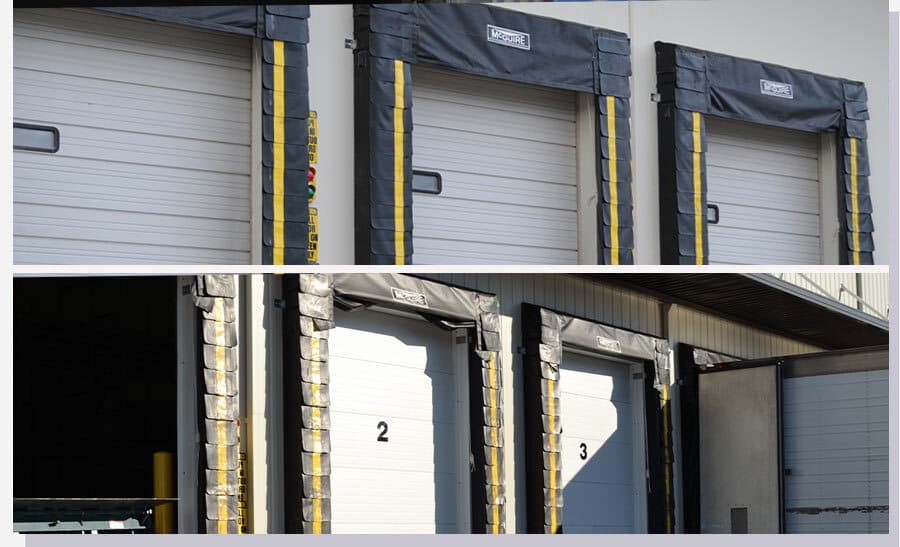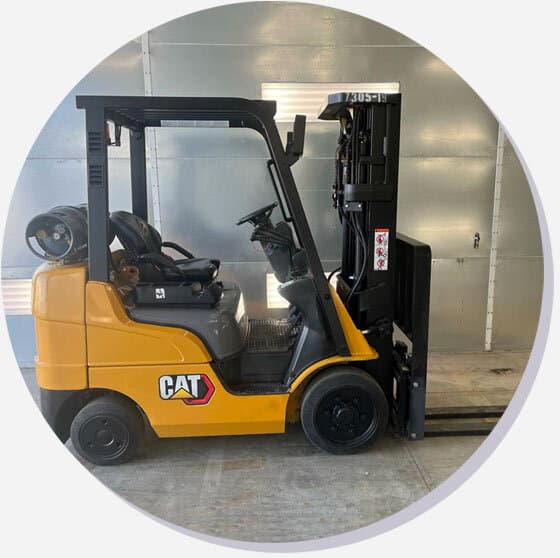Will Your Dock Seals & Shelters Survive Winter? Inspect Them & Find Out
It’s a little early to talk about winter protection...but not TOO early.
As the weather turns cold, insects, birds, and rodents will try to find warmer climates. That can mean the inside of your facility, and nobody wants to deal with that.
Now’s the time to check your docks’ seals and shelters. Let’s keep the bad stuff out, and keep our teams comfortable.

The Sources for Dock Seal/Shelter Damage
What causes damage to dock seals/shelters? The same things you don’t want getting into the facility.
Trailers. More than anything else, trailers damage dock seals and shelters. Sharp edges on the trailers, or the trailers moving up and down during load/unload, cut or press on the seals/shelters. Over time this wears out in spots or creates tears.
Heat. Dock seals and shelters use rubber, foam, and wood in their construction. What does heat do to rubber, foam, and wood? Makes them expand.
Cold. Colder temperatures shrink seals and shelters. The hot-cold cycle warps both, pulling open gaps and cracking rubber edges.
Water. Dock shelters don’t compress against trailers like seals do. But they do funnel rain away from the dock. Years of this weakens shelter curtains.
Eventually, all seals give out. It’s just a matter of time. We all know that…so it’s on all of us to keep an eye on them.
How to Examine Dock Seals & Shelters in 10 Minutes
In case you haven’t already done your regular checks on dock seals & shelters, here’s a quick reminder. It should only take you 10 minutes to check over several docks.
FOR DOCK SEALS:
- Examine all seals for consistent hold on trucks. Use the flashlight test to identify gaps between them.
- Run your hands down the seals to check for cracks, rough patches, or depressions in the support foam
- Make a note to check the seals again in December/January. They should NOT change in coverage at all. If they do, you have shrinking seals.
FOR DOCK SHELTERS:
- Examine all shelter fabric for tears, including the top curtain.
- Examine all attachment points. You shouldn’t see any wear, broken attachments, or staining.
- Check the upper corners of your warehouse door. Look for rust on the door, cobwebs, or debris lodged in the shelter.
- Check alignment on all shelter canvases. Are any bent? Something may have damage the internal tubing.
Found gaps, tears, or another sign of failure? Schedule a dock repair as soon as possible with your local Cromer. We take care of:
- Repair of minor cracks/tears
- Replacement of cracked segments
- Replacement of curtain or side panels
- Repair for internal tubing
Why ASAP? You’ve probably seen that lead times are still long. It can take months to get fresh seals. Ordering now means you’ll have them in place when the cold really hits.
Should You Switch from a Dock Seal to a Shelter (Or a Shelter to a Seal)?
Finally, let’s answer a question that comes up now & then. If you have a dock seal, does it make sense to switch to a shelter? Or vice versa?
It depends on the dock’s regular activity. Consider all of these factors when you’re wondering about a switch.
- Seals isolate the dock more efficiently than shelters, but not all docks need high-seal protection.
- What products does your facility transport?
- Food product requires dock seals to protect shipments from contamination.
- Non-perishable items can use either a seal or shelter.
- If you receive from different trailer sizes, a dock seal may not fit to all of them, leaving open-air gaps (and causing damage). In this case, a shelter makes more sense.
Winter-Secured Seals & Shelters Keep Everything in Good Shape
Without seals or shelters, our docks would constantly let weather, water, and bugs inside. They’re a critical part of the facility. So let’s take a few minutes and check them over. Handling any needed repairs before Winter hits will make everyone healthy & happy.
Until next month!
Doug Perez, General Manager
Cromer Inc.
Deal of the Month
2019 CAT 2C5000 LPG – ONLY $19,950
For our September Deal of the Month, we have another used forklift retired from the rental fleet!

This is a CAT 2C5000 cushion-tire sit-down, made in 2019. It has a 5,000# capacity, a three-stage mast, and a full reconditioning. This type of forklift works best indoors.
It has 7,413 hours on it right now. With the reconditioning and its mid-range capacity, this CAT will easily double those hours. Pick it up today for only $19,950.
To pick up this CAT LPG forklift, call Cromer at 800.464.3225 and ask for the September Deal of the Month.


